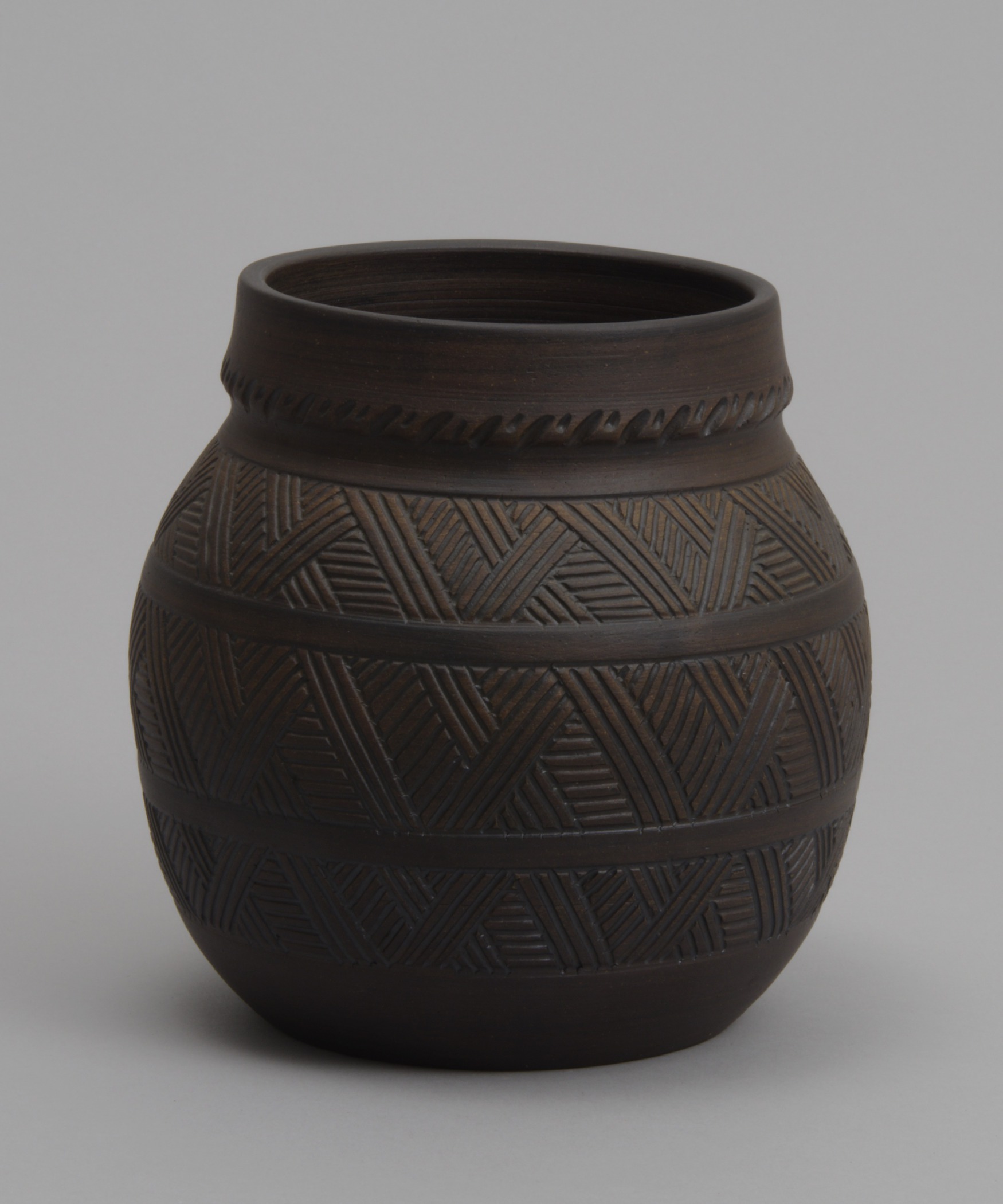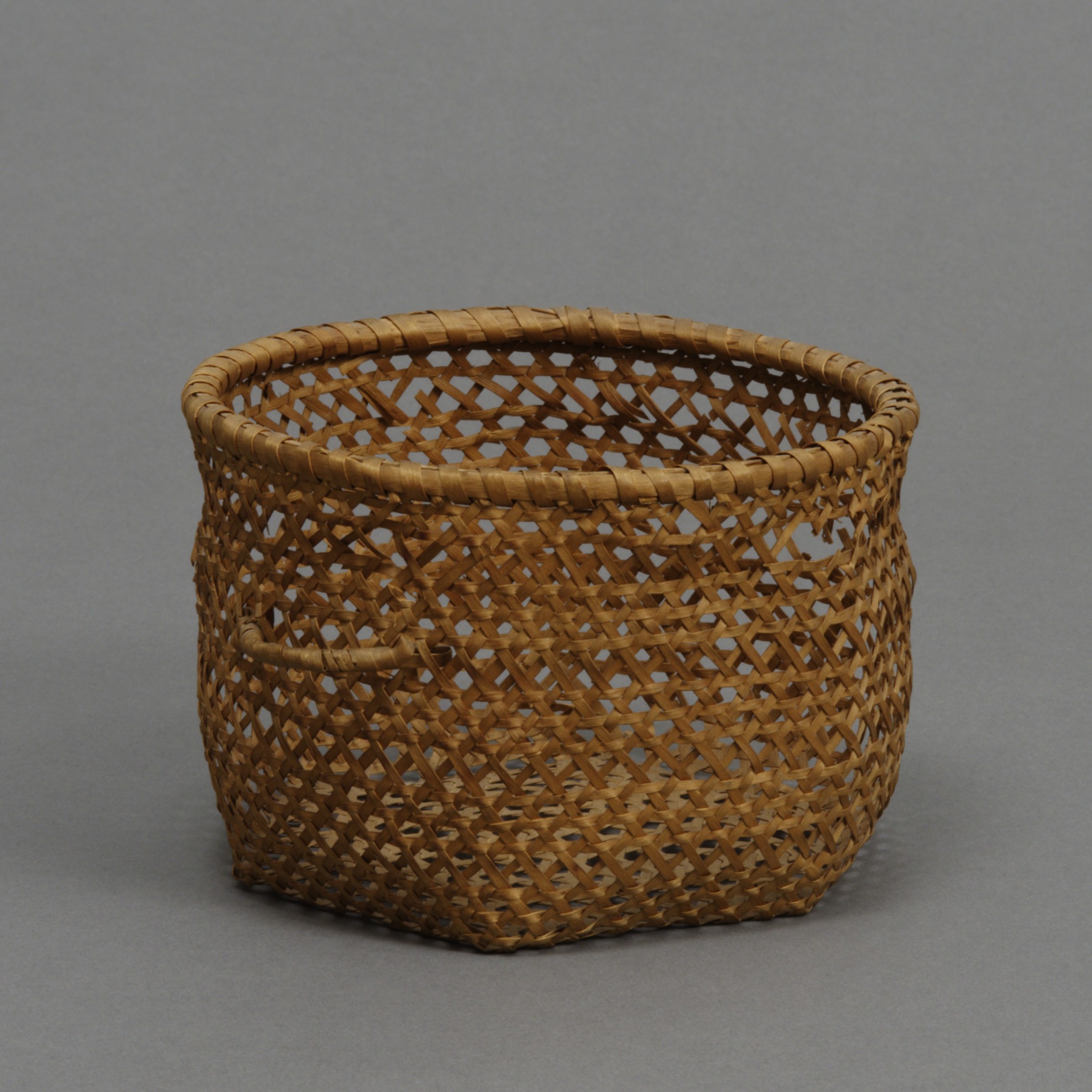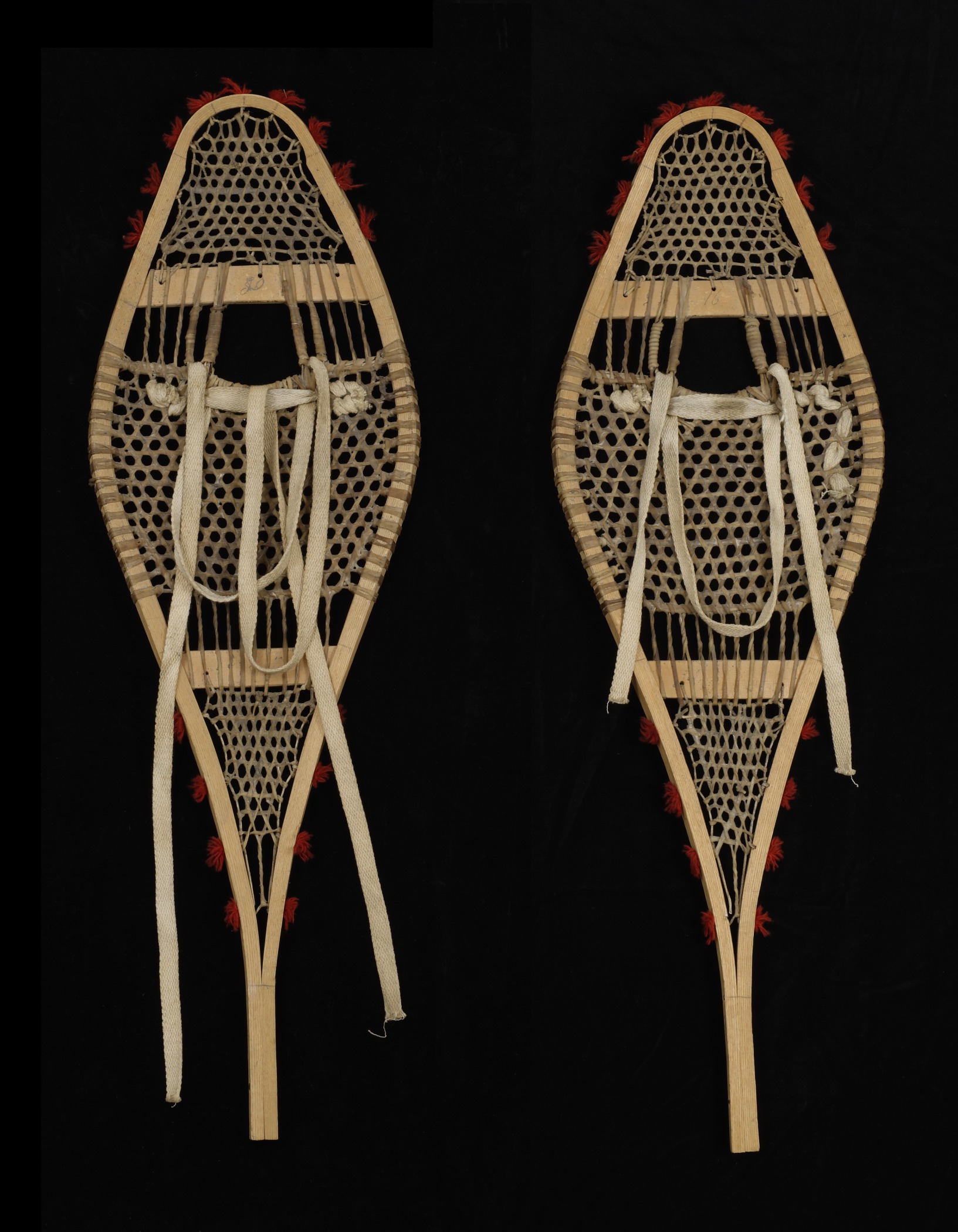Nicolas Panadis, Canadian (Abenaki [Abnaki/Wabanaki]), 1850-1947
Pair of snowshoes
- About 1925
- Ash wood, birch wood, rawhide, and yarn
- 35 1/2 x 11 7/16 in.
Hood Museum of Art, Dartmouth College: Museum Purchase; 159.28.14452
visibilityLook & DiscussThousands of years ago, people in cold climates probably noticed that animals like hares could move easily in deep snow because of their broad paws. This observation most likely led to the invention of the snowshoe. Snowshoe shapes and materials vary from Asia to the Americas, but Woodlands peoples used hard wood, like ash—the same strong, flexible tree used for making baskets—for the frame. For thousands of years, snowshoes were critical tools for hunters in winter.
When Europeans arrived in the Americas, they quickly recognized the superiority of native-made winter footwear, and trappers, hunters, and surveyors adopted them for themselves.
In the late 19th and early 20th century, European Americans actively collected native-made snowshoes for recreation in wintertime. Abenaki elder Lazare Wawanolett made this pair of snowshoes in the traditional way. He was 75 years old when he made them for a female neighbor. They have turned-up toes to make it easier to move over uneven terrain.
Explore the Object
Historically, Woodlands people cut, soaked, and steamed long pieces of ash to make them pliable, and then bent them into the shape of the snowshoe frame. They used a sharp, pointed tool, called an awl, to create holes in the sides. They then laced the frame with a webbing of raw deer hide.
Wawanolett made these snowshoes of ash, birch, and rawhide that may be from a cow rather than a deer. He added white and red pompoms to the sides for decoration. Long ago, his ancestors would have used tufts of moose fur.
Meet the Artist
Nicolas Panadis was born in 1850 and lived to be 96 years old. He was—like many of the inhabitants of Odanak, a village in the Abenaki First Nations reserve in Quebec, Canada—most likely a descendant of one of original inhabitants of the northern and central New England states. Many Wabanaki people migrated to Canada in the late 17th century to escape conflicts with English settlers and sickness in their homelands. Abenaki men in Odanak made traditional native tools and served as hunting and fishing guides for visitors for many years.
learn more
What do you notice about their shapes and sizes? The materials used?
How do they reflect the conditions of the geography in which they were used?




